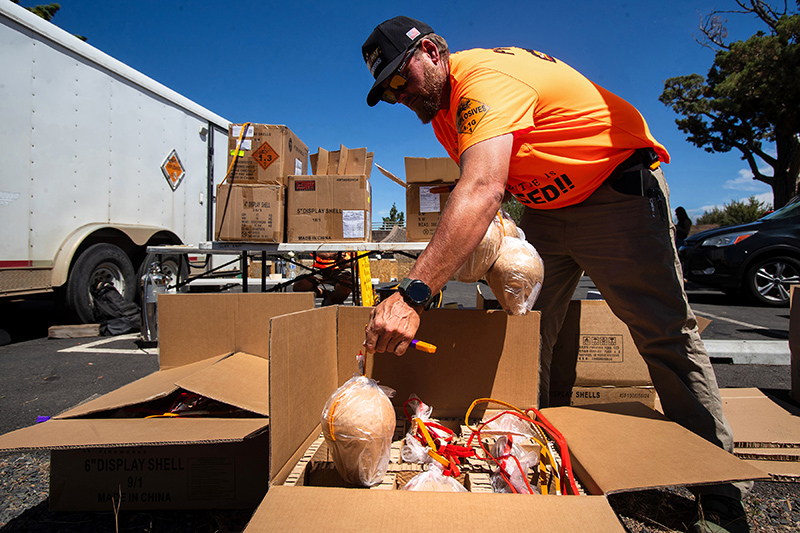Housing our teachers: A mother’s crusade
Published 12:00 am Sunday, August 26, 2018

- Sarah Chaffin, the mastermind behind the “Support Teacher Housing” initiative, pictured in July in Los Gatos, California. Her goal is to build more housing for local teachers, so they can afford to live in the neighborhoods where they teach. (Dai Sugano/Bay Area News Group/TNS)
LOS GATOS, Calif. — Sarah Chaffin could tell horror stories for hours about the teachers she’s met and their struggles to stay afloat in the Bay Area’s out-of-control housing market.
One teacher she spoke with goes hungry at the end of every month. Another sleeps in bunk beds in order to afford housing. And another sleeps on her couch so her teenage son can have their only bedroom.
In an effort to change some of those stories, Chaffin started Support Teacher Housing three years ago.
Her goal is to build more housing for employees of the Bay Area’s schools, who often fall into a category dubbed the “missing middle” — workers who make too much to qualify for subsidized affordable housing, but not enough to buy a home or comfortably pay rent.
Chaffin’s efforts are paying off. Santa Clara County set aside $6 million in April, and Palo Alto set aside $3 million in June to build up to 120 teachers homes on a lot next to the county courthouse.
In May, the Los Gatos Town Council approved four new teacher homes on a downtown lot.
Both projects need more funding, but Chaffin says they are off to a good start.
“Silicon Valley is essentially the richest place in the entire world,” said Chaffin, a mother from Los Gatos with a real estate background. “We can’t do better than having a teacher sleeping on the couch so her son can have a bedroom?”
She spoke about the plight of teachers and her plans to build more housing.
The interview has been lightly edited for length and clarity.
Q: What is Support Teacher Housing?
A: I have a fiscal agent, so it functions more or less as a nonprofit. But the way I view what I’m doing is really as a startup. It’s essentially an advocacy group to promote affordable housing for teachers, but I’m also working on trying to develop actual projects and housing.
Q: How did you get involved in this cause?
A: My background is in real estate finance — I used to work for a portfolio lender. I was seeing that it was becoming more and more difficult for people to qualify to buy a home. I met with a single mother who was making about $100,000 a year — she was actually working for a high-tech company and she had a decent job — but she was paying $3,500 a month in rent, and she didn’t even have 5 percent to put down on a $500,000 condominium. I said something has to be done. So I started researching different affordable housing options. And that’s when I realized there was really nothing for people in that “missing middle” group.
Particularly I was interested in teachers. At the time my daughter was in preschool, and they were having a very hard time recruiting and retaining teachers.
Q: How is the housing crisis impacting our schools and our kids’ educations?
A: I go around the Bay Area, and I listen to different parents and teachers and hear their stories.
One mother told me that her daughter had three teachers in one school year. One young teacher I met with, she told me that she doesn’t have enough money for food the third week of the month.
Another teacher told me that they’re living in a one-bedroom apartment, but they essentially have bunk beds, and that’s how they’re able to stay in the area. Other teachers that are not living in the area are experiencing long commutes — maybe driving two hours each way to get to school. It’s a huge problem.
Q: You’re not a teacher yourself, so why are you passionate about housing teachers?
A: I’m dyslexic, so it was actually my teachers that helped me, staying after school, helping me during recess.
Some teachers say the most important learning happens outside of the classroom.
And what’s happening is the teachers have such long commutes that as soon as that bell goes off at 3 p.m., they have to leave because they may have to drive two hours to get home.
And they’re not able to really spend that extra time with their students which they normally would do.
Q: How does the Support Teacher Housing model work?
A: We’ve been holding teacher town halls where we gather teachers, principals, faculty, members of the school board, the community and parents together, and we have the teachers share their housing stories.
The other part of what we’re doing is we’re promoting a model where you take a vacant or underutilized piece of land — it can be public, private, school district land, city land, town land — you take that, you combine it with high-quality, low-cost green technology, and then you can build moderate-income housing and actually charge people a reasonable rent.
If you use a panel system, or modular units, you can actually save about 30 percent in terms of cost.
The rent would be low enough so the teachers would be able to save up a down payment, and then within five to seven years, they would be able to buy their own home.
Once the teachers save up a down payment, they move out and you have new teachers move in.
Q: What are the biggest obstacles that have stood in your way so far?
A: In terms of the advocacy piece, now that we’re three years into it, people are aware of the issue of teacher housing and the missing middle, but when I first started talking about it, people were not really that concerned.
On the development side, there’s many different obstacles, and it’s very, very difficult. That’s part of the reason why we have a housing crisis, because first of all it’s extremely expensive to even go through the entitlement phase of getting a project going. So often times someone like me, who is essentially a nonprofit developer, you can’t really compete with a for-profit developer .
Q: You hit a setback last year when San Jose officials rejected your proposal to build teacher homes on your private land in Willow Glen, saying it wasn’t zoned for residential development. What went wrong there?
A: I think a couple of things — I think that if I had applied for my project today, I think the project would actually go forward. The city has changed their policy in terms of making general plan amendment changes and being more flexible in terms of the need for affordable housing. So I think unfortunately I was a little bit ahead of the curve. If the city of San Jose wanted to work with me to build affordable housing for teachers, I would absolutely do it. I still own the property.
Q: How many teachers in need of housing have contacted you?
A: About 300 or 400 teachers are actually on my list of people who want housing. And then I have several thousand people who subscribe to my email list.
Q: You don’t have a background as a developer, so how do you convince city officials that you have the knowledge to pull off these projects?
A: I have an extensive real estate background. I’m not a contractor, so I’ve never actually built something on my own, but I’ve been able to bring a team together with me to work on these projects.
Q: Teachers clearly need more housing, but what about the other people in the “missing middle?” Don’t they need housing too?
A: Absolutely. The first project that I was focusing on, I happened to be focusing on teacher housing. However once the model has been proven, it can be replicated for anyone who’s in the missing middle. And that’s sort of the point.
Q: Who would qualify to live in the teacher housing units, and how would they apply?
A: It’s early stages, so that’s really something that the town decides. It’s essentially going to be for teachers and anyone that works for the schools.
On my website I’d like anyone who needs housing to please sign up.
Signing up is critical so we can let the elected officials and the community know what a need there really is for housing.
We also need the private sector and foundations to help out with these projects.
Whether that means lending the money at attractive rates, or better yet donating or sponsoring these projects, it’s really critical because the more sponsorship we can get from the companies and the foundations, the lower the actual rent can be for the teachers.








